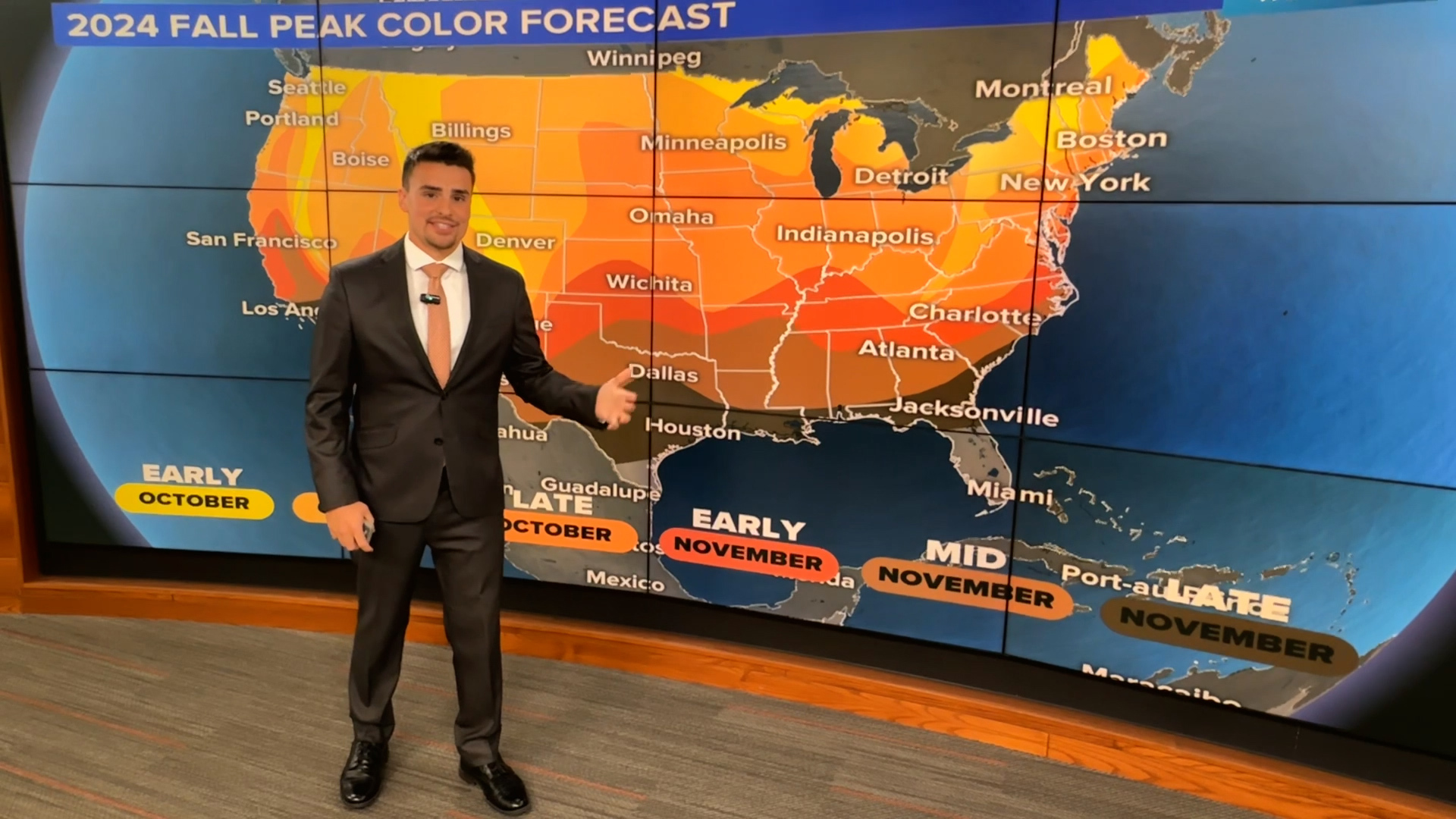INDIANA, USA — If you are planning your fall colors trip, we have the forecast for peak timing, based on recent weather conditions.
You may have noticed a few trees starting to change a little early in spots around your neighborhood or around the grocery store. Peak colors will be on the way soon. When can you expect peak foliage where you live, or wherever you are planning to travel to see the leaves?
Tap HERE for the latest weather forecast across Indiana.
We have average peak fall color dates. However those are "average." Every year, the peak date can be a little earlier or later, depending on the weather. Recent temperature and rainfall trends can slow or quicken the pace of color change. Generally, most places get about a week of peak fall colors. We took the average map and then modified it with recent weather patterns. When do we think that peak will be?
When is peak typically?
This map comes from ExploreFall.com and shows the average peak fall color timing across the country. Indiana is typically late October. However, some places in extreme southern Indiana are knocking on the door of some November dates. This is average.

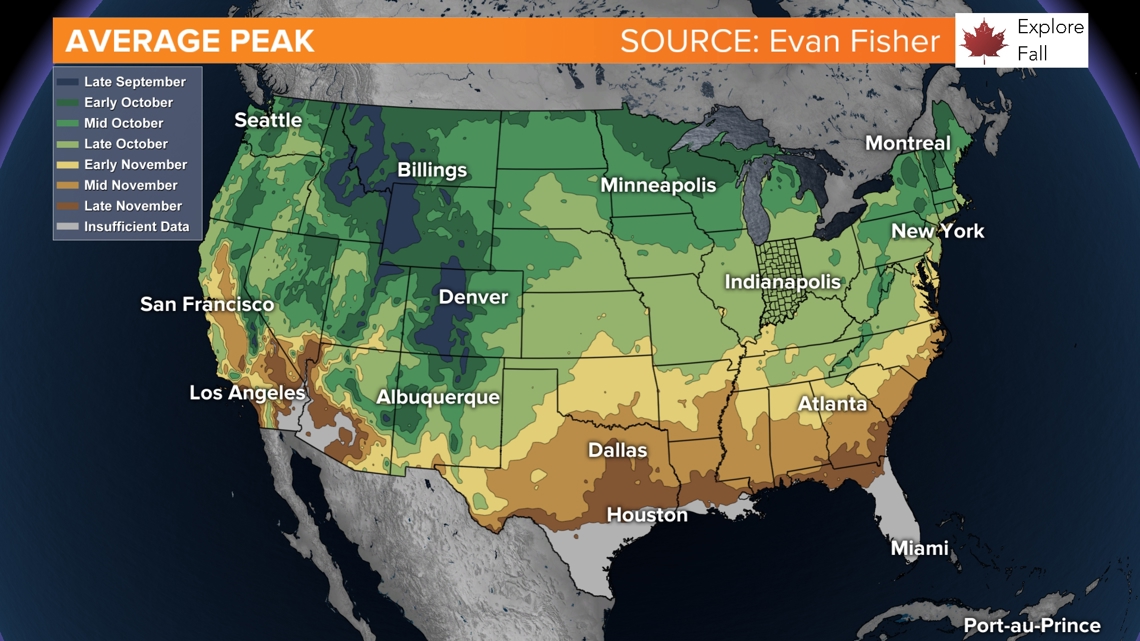
Peak fall color timing (estimated)
Based on the weather, we think much of the U.S. that is not in a high elevation (above 2,000 ft. MSL), peak may be delayed by about a week. There are few places near the Mid-Atlantic and the southeast coast that may have roughly near peak, thanks to cooler and wetter weather.

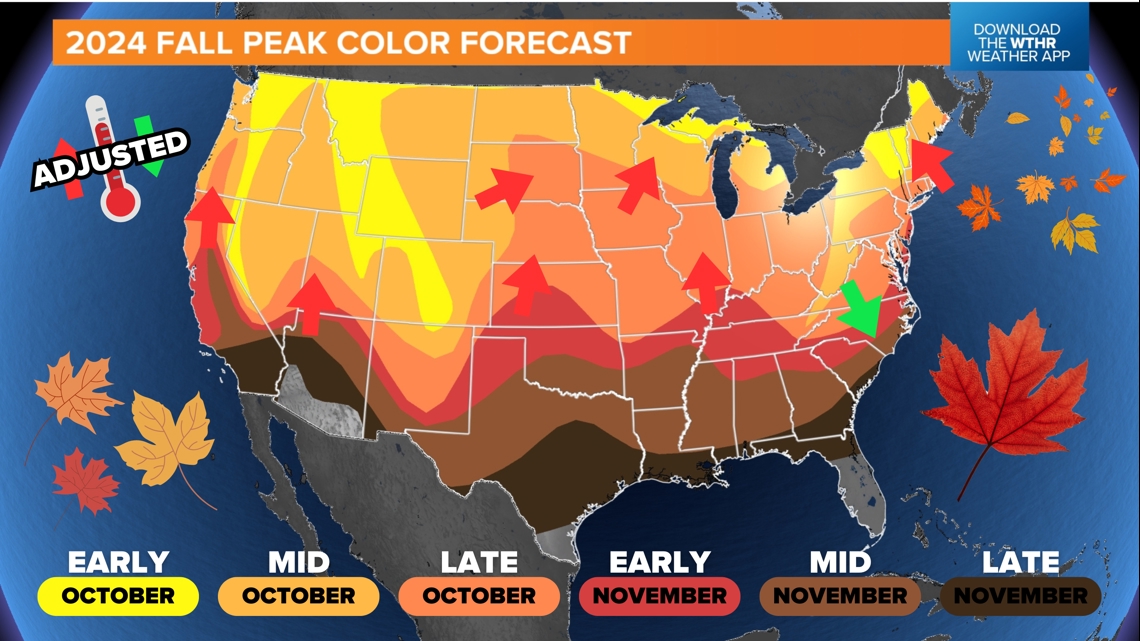
The arrows indicate where we made some changes in timing. Red arrows mean we have delayed timing. So essentially, the southern colors (later times) have pushed north. And vice versa... Green arrows mean we have sped up timing. So essentially, the northern colors (earlier times) have been pushed south.
(Note: For a closer look at each region, scroll down. Also for a map without arrows, scroll down.)
- Yellow: Early October
- Light Orange: Mid-October
- Dark Orange: Late October
- Red: Early November
- Cocoa Brown: Mid-November
- Dark Brown: Late November
- Gray: Late November or early December; however, fall colors are a big thing in these areas
Weather impacts
Temperature is one of the biggest factors in the timing of peak foliage. Warmer weather, especially at night, tends push back peak colors.
In addition, rainfall can impact peak timing. Much drier weather or drought can also push back leaf change. Mainly, it impacts the color. Drought really dulls the oranges, reds and yellows.
This outlook is for the middle and near end of September. Lots of warm air expected. Mix in some chilly days too, but the warmer days may outnumber the cooler ones.

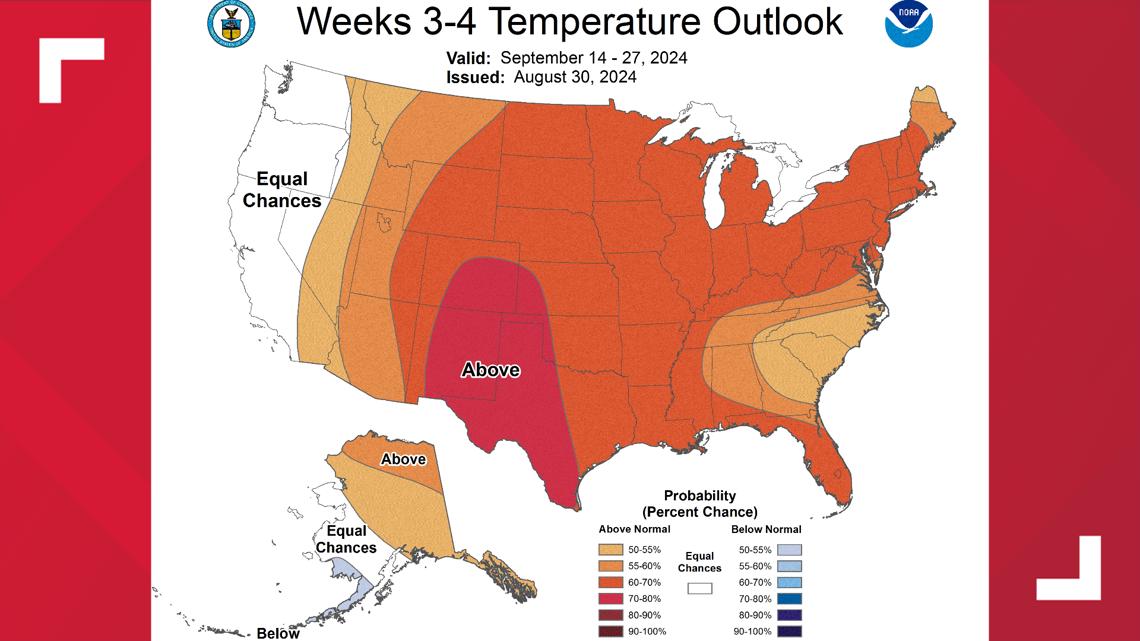
This is the outlook for September, issued by the Climate Prediction Center. Much of the western and central U.S. have higher chances for above-average temperatures in September. September is a big month for leaf change. Changes in September can bring huge consequences (good and bad) to leaf color.

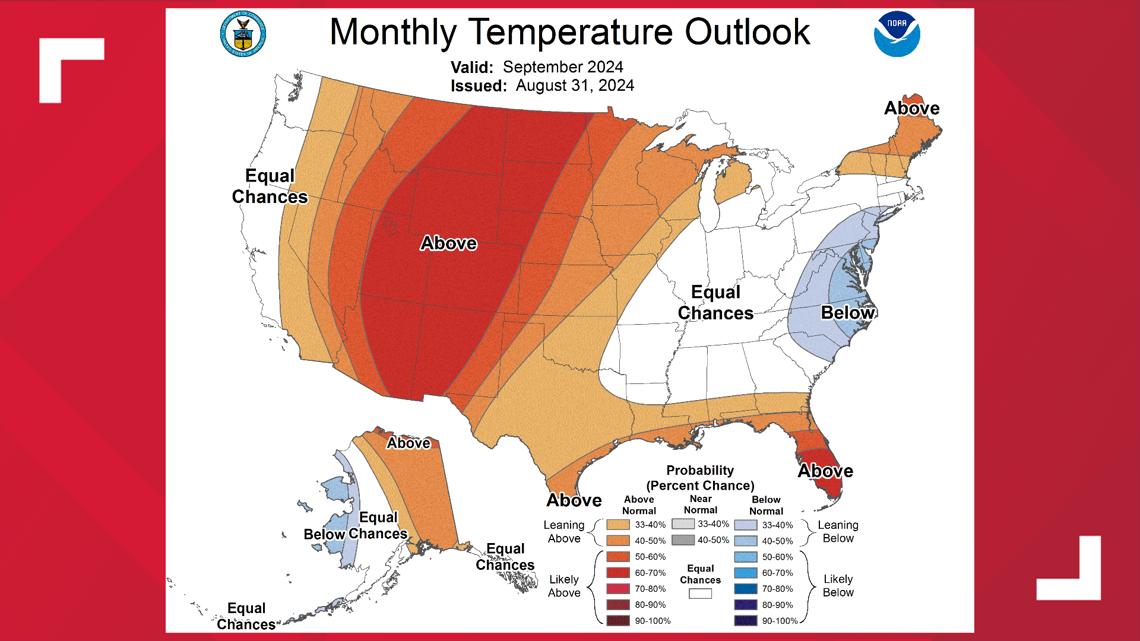
Drought impacts
Drought mostly impacts color, making the fall foliage look duller. Some of the fall leaves may even drop early.
Extreme drought can also delay timing a bit, too. It's harder to tell when peak is happening because of duller colors.

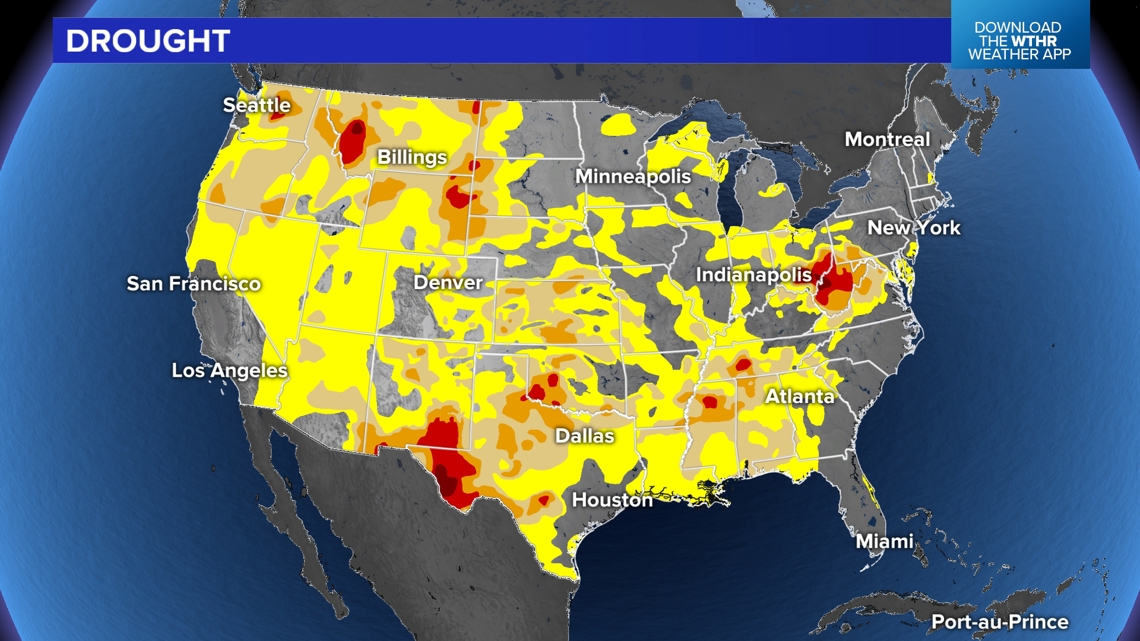
For areas of more intense drought (oranges and reds), we also delayed timing a bit.
Region-by-region analysis
Those other maps are too small to see individual regions. We have a zoomed-in look across the country.
Northeast: There are not huge changes expected for the northeast. Many locations may see a peak 2 to 6 days behind schedule.
We pushed back parts of the Appalachian mountains by a few days, thanks to the drought around West Virginia and southeast Ohio.

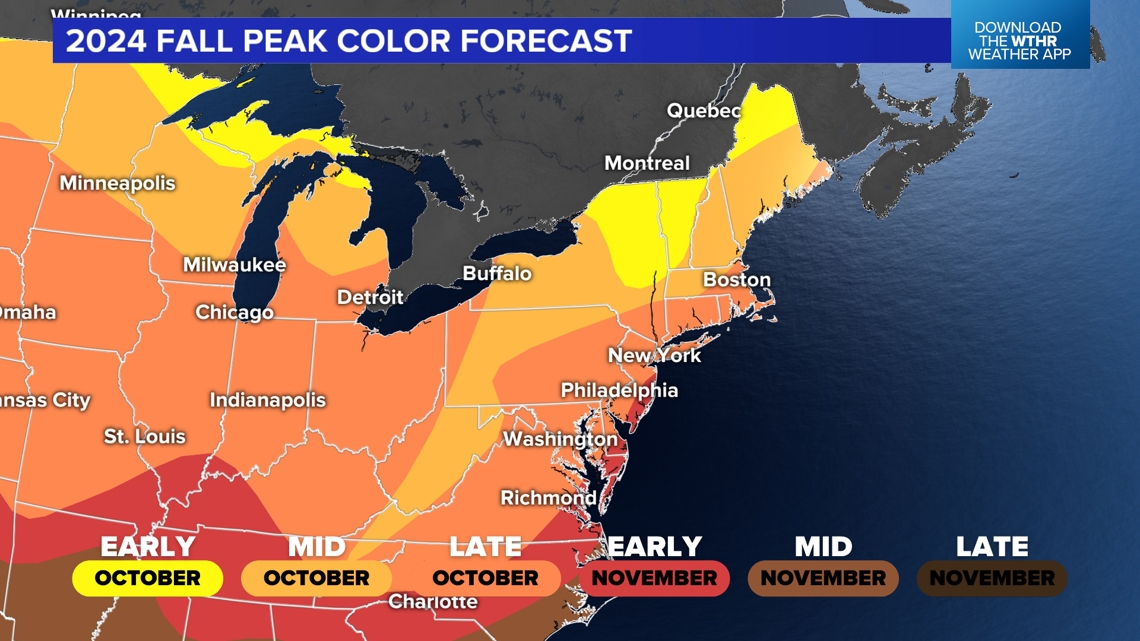
Southeast: There are parts of the Carolinas where we think peak may be right on time, or in a few cases, early by 1-2 days. This is thanks to some extra rainfall. However, that may be counteracted.
To the west toward the Mississippi River, peak may be delayed by 2-4 days.

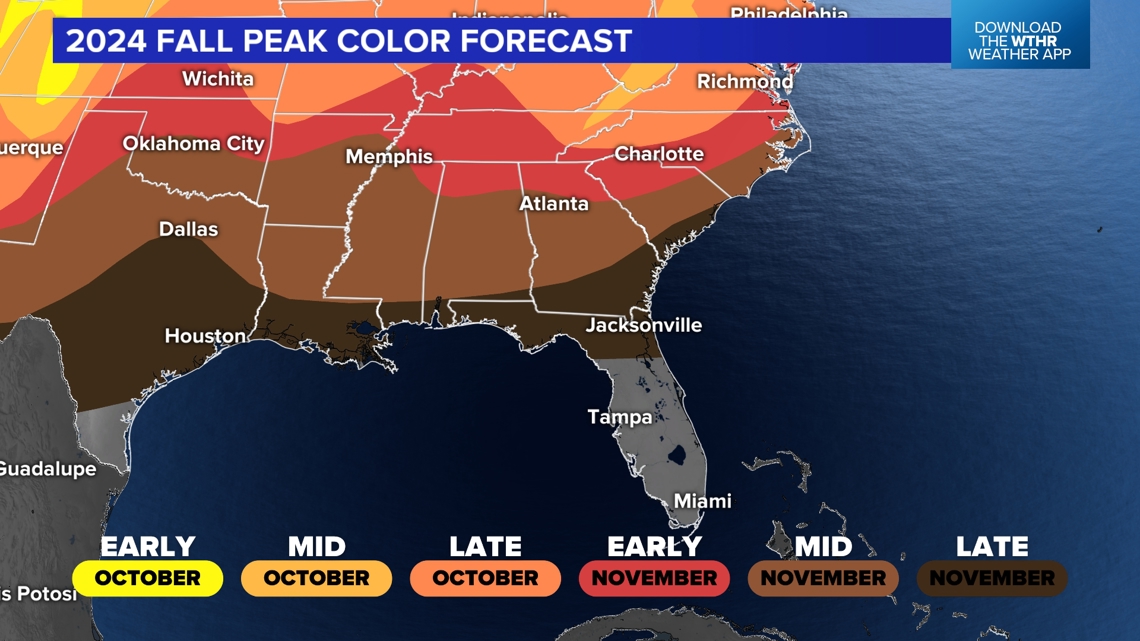
Midwest and Central Plains: Peak may be delayed by a few days, thanks to more days of warmer air than colder air.

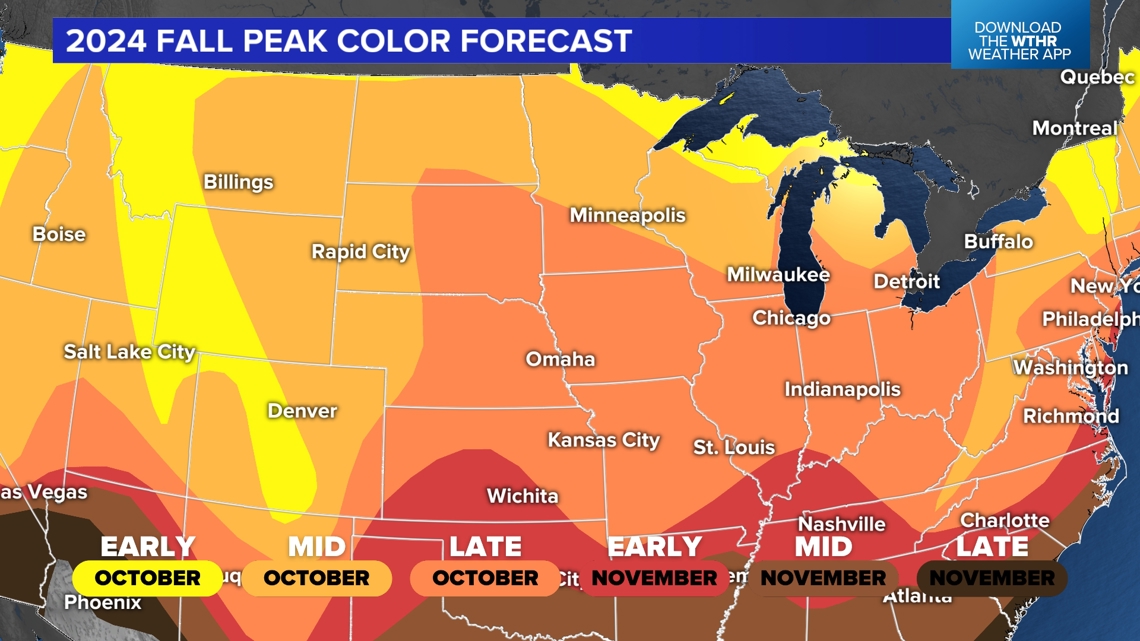
Southern Plains: Peak may be delayed by a few days across much of the south. Generally, expect 3-6 days slower than normal.
Plus, the drought in western Oklahoma and West Texas may also help to delay peak colors by a week.

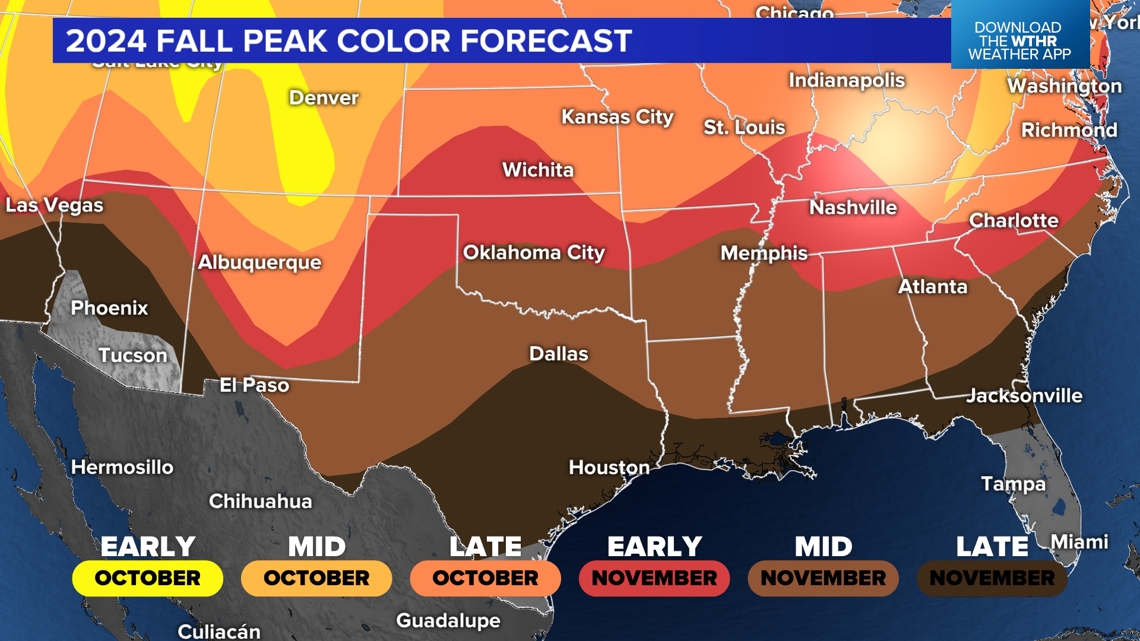
The West: Unless you are on a mountain, expect peak fall colors to be delayed by about a week. A high pressure heat dome looks fairly long-lasting across the West, which may push back fall colors 3-8 days at lower elevations.

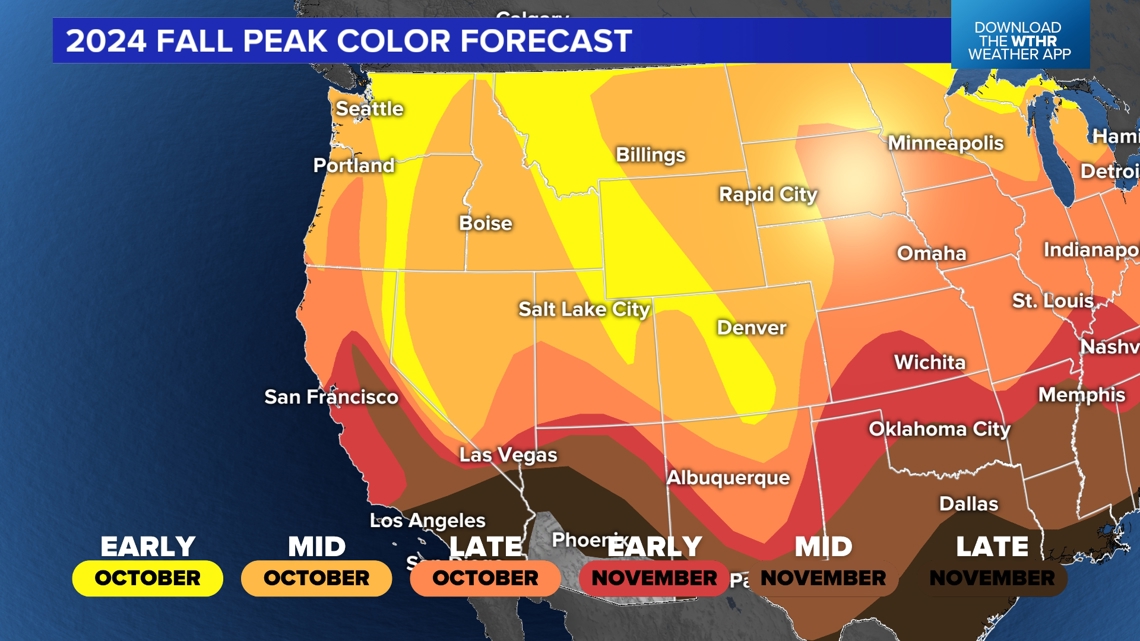
For our forecast on fall color vibrancy (compared to normal), tap HERE.

